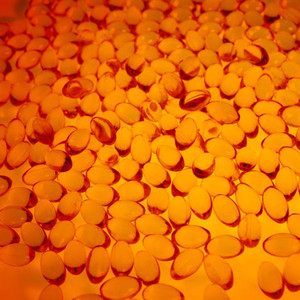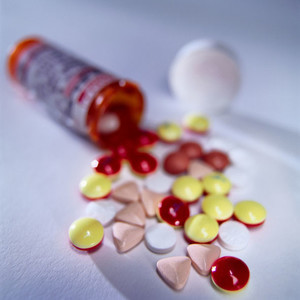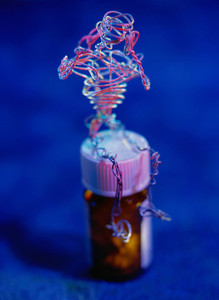Amoxicillin is a moderate-spectrum, bacteriolytic, β-lactam antibiotic used to treat bacterial infections caused by susceptible microorganisms. It is usually the drug of choice within the class because it is better absorbed, following oral administration, than other β-lactam antibiotics.
Amoxicillin is one of the semi-synthetic penicillins discovered by Beecham scientists, marketed as the brand-name product Amoxil of SmithKline Beecham (now GlaxoSmithKline) for the treatment of infections due to susceptible organisms. Sales of the branded product in the US were approximately US$34 million (Euros 22.83 million) in 1999.
Brand-name Amoxil has come off-patent and is available as a generic drug, which is available in a number of strengths and comes in the form of capsules, tablets, chewable tablets, and an oral suspension. These generics are manufactured by a few companies – including Apothecon Laboratories, Teva and Sandoz – but marketed under about 50 different trade names*.
In a paper by Mario Del Tacca et al. of the University of Pisa, Italy, published in the British Journal of Clinical Pharmacology of February 2009, only two generic formulations were compared with the branded product, after which a lack of pharmacokinetic bioequivalence between one of these two generic products and branded amoxicillin was suggested.
The two generic amoxicillin formulations for the clinical trial were chosen out of four fast-release tablet formulations available on the Italian market by means of an in vitro selection test for preliminary screening. In their discussion the authors admit that this selection of generic amoxicillin products was performed by means of an in vitro test that was simplified with respect to the standard method of US Pharmacopoeia, and therefore their assay might have over-discriminated the differences between generic formulations and brand-leader amoxicillin.
The pharmacokinetic study was conducted in both adult men and women, to approach the standard general population exposed to generic medicinal products. International guidelines suggest that bioequivalence investigations should be performed on a minimum of 12 subjects and the number of subjects must be calculated to ensure a power of at least 80%. However, 24 healthy volunteers were enrolled in their trial both to maintain adequate statistical power, as shown by post-hoc analysis, and to overcome variability resulting from gender differences. In this respect, the sample size of their investigation was sufficient to minimize β-errors, and the randomization of study groups was sufficiently balanced to avoid bias of sequence allocation. Moreover, statistical analysis demonstrated that sequence and period effects did not occur.
Overall, one of the two generic formulations (generic A) analysed in their study did not satisfy the criteria for pharmacokinetic bioequivalence versus branded amoxicillin, since the 90% confidence interval (CI) of the Cmax ratio just exceeded the lower limit. Indeed, bioequivalence can be claimed when the CI of both Cmax and AUC ratios falls within the range of 0.80–1.25. It is also noteworthy that the AUC value, obtained for the branded formulation, was greater than that estimated for generic A and B, respectively.
When considering their findings on the lack of pharmacokinetic bioequivalence of generic A in light of the possible consequences for the pharmacodynamic activity of amoxicillin, they stress it is of note that Cmax is not the major pharmacokinetic parameter to predict amoxicillin efficacy. The efficacy of antibiotics is also closely related to the minimum concentration inhibiting bacterial growth (MIC) of target bacteria and therefore this parameter should be taken into account when the reference drug is an antibacterial agent. Furthermore, the lower limit of 90% CI for Cmax of generic A versus branded amoxicillin (0.7921) fell just below the acceptance limit of 0.80. Such a small gap might not be significant in the case of highly variable drugs, which are characterised by an intra-individual variability >30%, and it must be noted that EMEA guidelines allow widening of the acceptance range for 90% CI (0.75–1.33) in some limited circumstances, including drugs with high within-subject variability. According to them, the intra-individual variability of amoxicillin formulations could not be assessed, since a replicate design is needed to obtain such information.
In their study, both the branded and generic amoxicillin formulations contained the same salt of the active ingredient, but differed for excipient composition. However, whether such differences may have contributed to the lack of bioequivalence of generic A, as observed in their pharmacokinetic trial, remains undetermined, since specific data and detailed information on the manufacturing processes were not available.
Yet they conclude that according to the results of their pharmacokinetic trial, generic A and B preparations could not be claimed as ‘interchangeable’ on the basis of pharmacokinetic bioequivalence testing and that one of the two amoxicillin generic products was not equivalent to the brand-leader formulation in terms of single-dose clinical pharmacokinetics. According to them, this finding would support the view that some generic drug products, granted as ‘bioequivalent’ by the regulatory authorities, may lack actual interchangeability in the post-marketing setting, at least as regards the Italian market.
They suggested that post-marketing bioequivalence studies on generic medicinal products should be performed with more advanced therapeutic equivalence methods such as steady-state pharmacokinetics and/or assessment of pharmacokinetic pharmacodynamic relationships, in order to ensure adequate monitoring of the quality of generic drugs, which is a good idea.
*Actimoxi, Alphamox, AMK, Amoksibos, Amoxiclav Sandoz, Amoxidal, Amoxil, Amoxin, Amoksiklav, Amoxibiotic, Amoxicilina, Apo-Amoxi, Augmentin, Bactox, Betalaktam, Cilamox, Curam, Dedoxil, Dispermox, Duomox, E-Mox (250 mg and 500 mg), Enhancin, Gimalxina, Geramox, Hiconcil, Isimoxin, Klavox, Lamoxy, Moxatag, Moxilen, Moxypen, Moxyvit, Nobactam, Novamoxin, Ospamox, Panklav, Pamoxicillin, Panamox, Polymox, Samthongcillin, Clamoxyl, Senox, Sinacilin, Trimox, Tolodina, Wymox, Yucla, Zerrsox, and Zimox.
(see also Bioequivalence testing for generics)
References:
Del Tacca M, Pasqualetti G, Di Paolo A, Virdis A, Massimetti G, Gori G, et al. Lack of pharmacokinetic bioequivalence between generic and branded amoxicillin formulations. A post-marketing clinical study on healthy volunteers. Br J Clin Pharmacol. 2009;68(1):34-42.
Source: British Journal of Clinical Pharmacology








 0
0











Post your comment